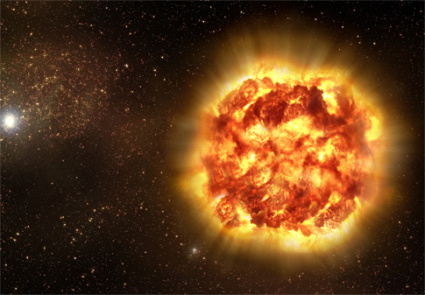What are the sources and forms that everyone talks about?

Recently, a friend of mine told me: Why state the definition of energy? People will not want to learn about that. They just stick with an energy provider and power up their houses.
In fact, that is our biggest mistake. I think that we should know what lies behind everything, in order to make the proper decision.
I strongly believe, that by the time you navigate away from this site, you will be considering of installing a set of modules on you house, and changing your energy provider too.
Significance of Behavioural Change
As much as formal initiatives and programmes have their place in the battle for a more energy efficient UAE, there also needs to be a general shift in culture by the public. Improving public perception of green issues and encouraging behaviours that support energy efficiency can contribute significantly towards the overall goal. As fuel prices increase in the domestic market, the UAE’s citizens are already adding more weight to fuel efficiency when considering what cars they will buy.

SUVs and 4x4s might still be the biggest sellers but household budgets are becoming increasingly stretched and many ordinary citizens are looking for smaller more efficient cars. Perhaps for the first time, the entire running costs of cars are being considered and the UAE’s car dealers and their suppliers are looking to accommodate this change in their customers’ attitudes. This trend is so significant that some car dealerships are seeing large year-on-year increases in sales of their smaller, more efficient models.
Car rental companies are seeing this trend also and in Dubai, at least one is making hiring a car with green credentials more appealing to a wider cross-section of the public – offering everything from the more familiar Chevrolet Volts and Nissan Leafs to the most exotic hybrid and fully electric cars available to hire or lease.
Capitalising on these trends makes both environmental and business sense but economic drivers cannot alone be left to change public behaviour. There are really simple measures that government and business should be encouraging people to take. Some may argue that switching-off computers, lights and air-conditioning at the end of the working day may save energy but is not sufficiently worthwhile promoting – voluntary measures of this sort will not impact on overall energy trends.
There is evidence however that if these behaviours are added to measures like installing energy efficient lighting, lowering thermostats and optimising EESL five-star rated air-conditioners, the energy savings really do become significant – potentially halving a building’s energy consumption.
Conserving energy may not yet be a way of life in the UAE but the rapid changes being seen there are an indicator of what is to come. Formal energy efficiency programs and voluntary measures combined will help the UAE maintain its economic strength in the region and because of this it is one agenda that will not be going away

Our sun is a major source of energy; other sources include nuclear fuels and geothermal springs. These sources can be converted into the various types of energy we use: Heat, mechanical work, and electricity. Because the conversion of heat into mechanical work cannot be 100%, some energy is always lost as heat as we use energy for residential power, industrial manufacturing, and transportation. (Image by MIT OCW.)
Course Description
This course assesses current and potential future energy systems, covers resources, extraction, conversion, and end-use, and emphasizes meeting regional and global energy needs in the 21st century in a sustainable manner. Different renewable and conventional energy technologies will be presented including biomass energy, fossil fuels, geothermal energy, nuclear power, wind power, solar energy, hydrogen fuel, and fusion energy and their attributes described within a framework that aids in evaluation and analysis of energy technology systems in the context of political, social, economic, and environmental goals. This course is offered during the last two weeks of the Independent Activities Period (IAP), which is a special 4-week term at MIT that runs from the first week of January until the end of the month, and continues into the Spring semester.
























